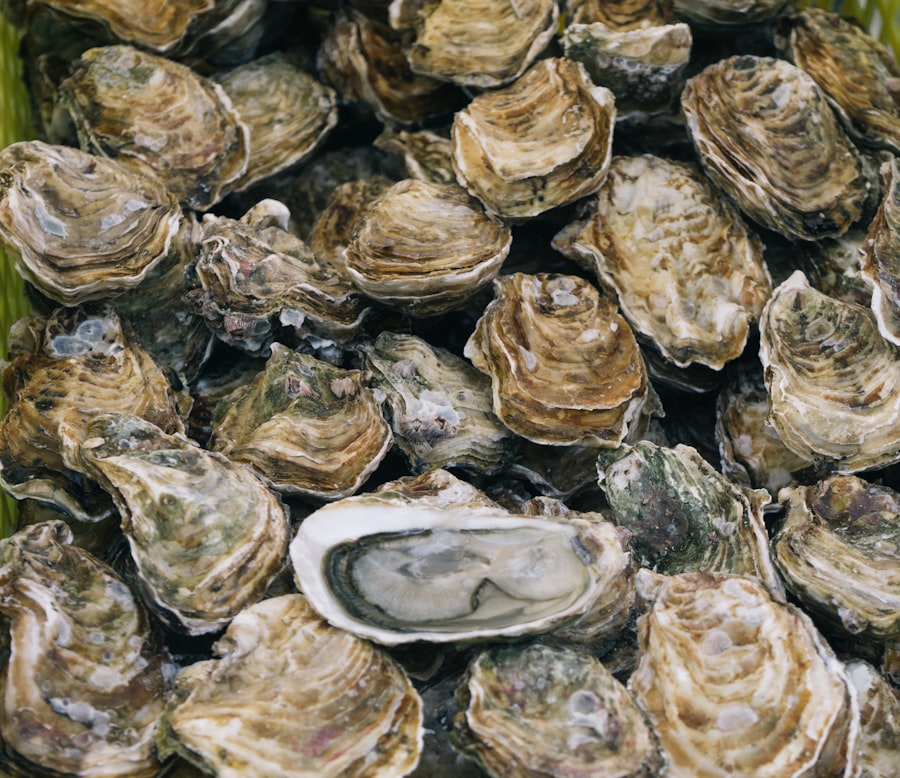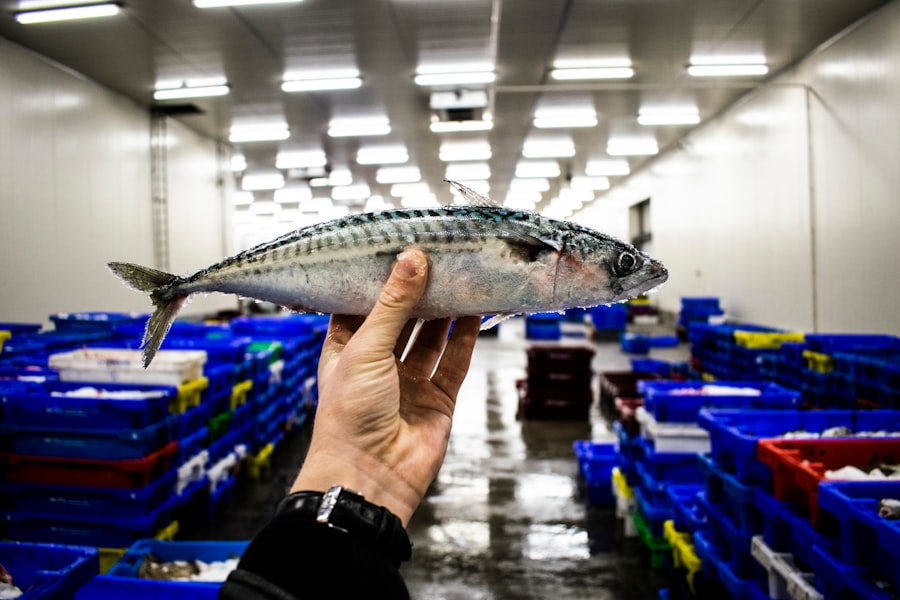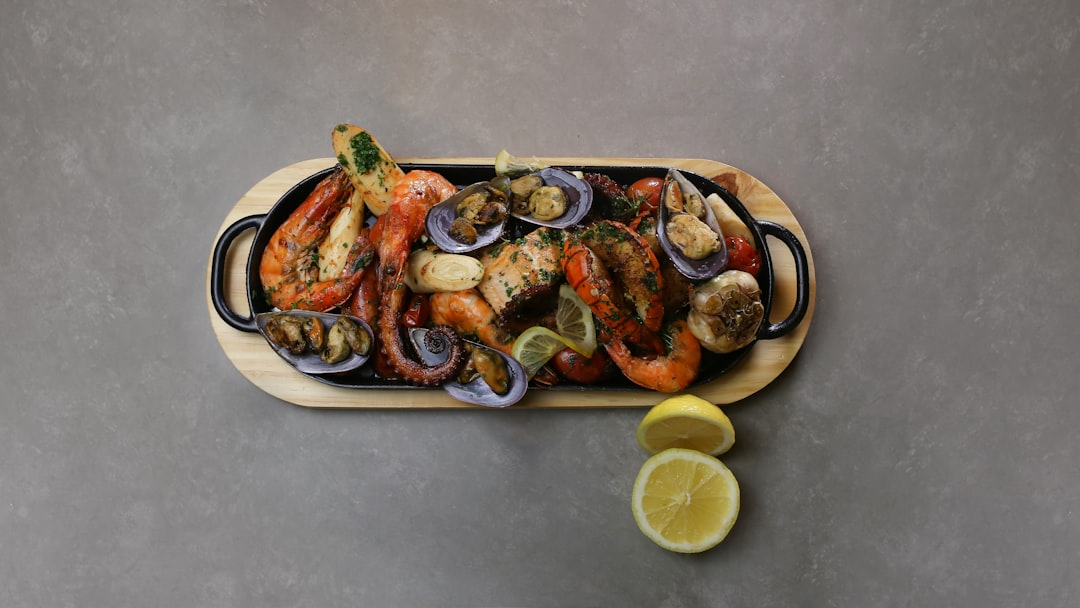Seafood has long been a staple in diets around the world, celebrated for its rich flavors and nutritional benefits. However, alongside its culinary appeal, a myriad of myths and misconceptions has emerged, clouding public perception and influencing consumer choices. These myths can lead to confusion and misinformation, ultimately affecting how individuals approach seafood consumption.
Understanding the truth behind these myths is essential for making informed decisions that align with health goals, environmental sustainability, and ethical considerations. As the global demand for seafood continues to rise, so does the need for clarity regarding its benefits and drawbacks. From concerns about mercury levels to debates over farm-raised versus wild-caught options, the landscape of seafood consumption is fraught with conflicting information.
By examining these myths closely, one can gain a clearer understanding of the realities of seafood, empowering consumers to make choices that are not only beneficial for their health but also for the planet.
Key Takeaways
- Not all seafood contains high levels of mercury; mercury content varies by species.
- Farm-raised seafood can be healthy and safe when properly managed.
- Seafood sustainability varies; not all seafood is environmentally friendly.
- Seafood freshness depends on handling and storage, not just source.
- Making informed, sustainable choices is key to enjoying seafood responsibly.
Myth: All Seafood is High in Mercury
One of the most pervasive myths surrounding seafood is the belief that all varieties contain high levels of mercury. This misconception often stems from reports highlighting certain fish species, such as shark, swordfish, and king mackerel, which are known to accumulate higher concentrations of mercury due to their position in the food chain. However, it is crucial to recognize that not all seafood poses the same risk.
Many types of fish and shellfish, including salmon, sardines, and shrimp, are low in mercury and can be safely consumed as part of a balanced diet. Moreover, health organizations such as the U.S. Food and Drug Administration (FDA) and the Environmental Protection Agency (EPA) provide guidelines on seafood consumption that emphasize the importance of variety.
They recommend that individuals eat a diverse range of seafood while being mindful of those species that are higher in mercury. By doing so, consumers can enjoy the health benefits of seafood—such as omega-3 fatty acids—without exposing themselves to excessive mercury levels. Thus, it is essential to dispel the myth that all seafood is high in mercury and instead focus on informed choices based on specific species.
Myth: Farm-Raised Seafood is Unhealthy

Another common myth is that farm-raised seafood is inherently unhealthy compared to its wild-caught counterparts. This belief often arises from concerns about farming practices, including the use of antibiotics, pesticides, and feed quality. While it is true that some farm-raised fish may be exposed to these factors, advancements in aquaculture have led to significant improvements in farming practices over the years.
Many responsible aquaculture operations prioritize sustainability and fish health, resulting in nutritious products that can be just as beneficial as wild-caught seafood. In fact, farm-raised seafood can offer several advantages over wild-caught options. For instance, farmed fish are often more readily available and can be produced with a lower environmental impact when managed sustainably.
Additionally, farm-raised species such as tilapia and catfish are typically lower in contaminants and can provide a consistent source of protein for consumers. By recognizing that not all farm-raised seafood is unhealthy, individuals can make more informed choices that support both their health and sustainable practices within the industry.
Myth: All Seafood is Sustainable
| Metric | Details |
|---|---|
| Percentage of Overfished Stocks | Approximately 33% of global fish stocks are overfished |
| Bycatch Rate | Up to 40% of catch in some fisheries is unintended bycatch |
| Impact on Marine Ecosystems | Destructive fishing methods damage coral reefs and seafloor habitats |
| Certification Programs | Only about 15% of global seafood is certified sustainable by organizations like MSC |
| Illegal, Unreported, and Unregulated (IUU) Fishing | Accounts for up to 20% of global seafood catch |
| Consumer Awareness | Less than 30% of consumers understand seafood sustainability labels |
The notion that all seafood is sustainable is another myth that requires careful examination. While some seafood options are indeed harvested or farmed in environmentally responsible ways, many others contribute to overfishing, habitat destruction, and ecosystem imbalance. The sustainability of seafood depends on various factors, including fishing methods, species population health, and management practices.
Therefore, it is misleading to assume that all seafood is equally sustainable without considering these critical aspects. To navigate this complex landscape, consumers must educate themselves about sustainable seafood choices. Organizations such as the Marine Stewardship Council (MSC) and the Aquaculture Stewardship Council (ASC) provide certifications that help identify seafood products sourced from sustainable practices.
By seeking out these certifications and supporting fisheries and farms committed to sustainability, consumers can play a vital role in promoting responsible seafood consumption and protecting marine ecosystems.
Myth: Seafood is Always Fresh
The belief that seafood is always fresh is another misconception that can lead to disappointment for consumers. While fresh seafood is undoubtedly desirable, it is essential to understand that freshness can vary significantly based on factors such as sourcing, transportation, and storage practices. Many seafood products labeled as “fresh” may have been previously frozen or transported over long distances before reaching the consumer’s plate.
This can result in a loss of quality and flavor that may not meet expectations. Additionally, the term “fresh” can be misleading when it comes to seafood. In some cases, fish may be labeled as fresh even if it has been sitting on ice for several days.
To ensure the best quality, consumers should look for indicators such as clear eyes, firm flesh, and a mild ocean scent when purchasing seafood. Understanding the nuances of freshness can help individuals make better choices and enjoy a more satisfying dining experience.
Myth: All Seafood is Wild-Caught

The assumption that all seafood available in markets is wild-caught is another prevalent myth that overlooks the significant role of aquaculture in meeting global seafood demand. While wild-caught fish has its merits—such as being part of natural ecosystems—farm-raised seafood has become increasingly important in providing a sustainable food source for a growing population. In fact, according to the Food and Agriculture Organization (FAO), more than half of the seafood consumed worldwide now comes from aquaculture.
This shift towards farm-raised seafood does not diminish the value of wild-caught options; rather, it highlights the need for consumers to understand the diversity within the seafood market. By recognizing that both wild-caught and farm-raised seafood have their place in a balanced diet, individuals can make informed choices based on their preferences and values while supporting responsible practices across both sectors.
Myth: Seafood is Always a Healthy Choice
While seafood is often touted as a healthy food choice due to its high protein content and beneficial omega-3 fatty acids, it is essential to acknowledge that not all seafood options are created equal. Some species may be high in unhealthy fats or contaminants such as heavy metals or polychlorinated biphenyls (PCBs). For instance, certain types of fish may be more prone to accumulating harmful substances due to their diet or habitat.
Moreover, preparation methods can significantly impact the healthfulness of seafood dishes. Fried or heavily processed seafood options may negate many of the health benefits associated with consuming fish.
By being mindful of these factors, individuals can enjoy the benefits of seafood while minimizing potential risks.
Debunking the Myth of Seafood Fraud
Seafood fraud—where products are mislabeled or misrepresented—has become a significant concern in recent years. This issue has led many consumers to believe that they cannot trust what they are purchasing at markets or restaurants. However, while seafood fraud does occur, it does not mean that all seafood is subject to deception.
Many reputable suppliers prioritize transparency and traceability in their sourcing practices. To combat seafood fraud effectively, consumers can take proactive steps by seeking out suppliers who provide clear information about their products’ origins. Certifications from organizations like MSC or ASC can also serve as indicators of authenticity and responsible sourcing practices.
By being vigilant and informed about where their seafood comes from, consumers can help reduce instances of fraud while supporting ethical practices within the industry.
Understanding the Environmental Impact of Seafood Consumption
The environmental impact of seafood consumption is a critical consideration for consumers who wish to make responsible choices. Overfishing, habitat destruction, and pollution are just a few of the challenges facing marine ecosystems today.
For instance, bottom trawling can damage ocean floors and disrupt habitats while certain aquaculture practices may lead to water pollution if not managed properly. By understanding these environmental impacts, consumers can make choices that align with their values regarding sustainability and conservation. Supporting fisheries that practice responsible management or choosing aquaculture operations that prioritize environmental stewardship can contribute positively to marine ecosystems.
Awareness of these issues empowers individuals to take action through their purchasing decisions.
The Importance of Choosing Sustainable Seafood Options
Choosing sustainable seafood options is not just beneficial for individual health; it also plays a vital role in preserving marine ecosystems for future generations. Sustainable practices help ensure that fish populations remain healthy while minimizing negative impacts on habitats and biodiversity. By opting for certified sustainable products or supporting local fisheries committed to responsible practices, consumers can contribute to a more sustainable food system.
Moreover, making informed choices about seafood consumption can drive demand for sustainable practices within the industry. As consumers increasingly prioritize sustainability in their purchasing decisions, suppliers are more likely to adopt responsible methods to meet this demand. This shift can lead to positive changes across the entire supply chain—from fishing practices to aquaculture operations—ultimately benefiting both people and the planet.
Making Informed Choices About Seafood
In conclusion, navigating the world of seafood consumption requires an understanding of various myths and misconceptions that can cloud judgment. By debunking these myths—ranging from concerns about mercury levels to misconceptions about freshness—consumers can make informed choices that align with their health goals and environmental values. The importance of selecting sustainable options cannot be overstated; it empowers individuals to contribute positively to marine ecosystems while enjoying the numerous benefits that seafood has to offer.
As awareness grows regarding issues such as seafood fraud and environmental impact, consumers have an opportunity to advocate for responsible practices within the industry. By prioritizing transparency and sustainability in their purchasing decisions, individuals can play an active role in shaping a healthier future for both themselves and our oceans. Ultimately, making informed choices about seafood not only enhances personal well-being but also fosters a more sustainable relationship with our planet’s precious marine resources.
Many consumers hold misconceptions about seafood that can influence their purchasing decisions and dietary choices. For a deeper understanding of these myths and to learn more about the realities of seafood consumption, you can read the article on consumer myths about seafood at this link. This resource provides valuable insights that can help clarify common misunderstandings and promote informed choices when it comes to seafood.
WATCH THIS! The $10 Billion Lie: Why Your “Dolphin-Safe” Tuna Isn’t Safe
FAQs
Is all seafood high in mercury?
No, not all seafood contains high levels of mercury. Mercury levels vary depending on the species, size, and habitat of the fish. Generally, larger predatory fish like shark, swordfish, and king mackerel have higher mercury levels, while smaller fish like salmon, shrimp, and sardines tend to have lower levels.
Does seafood always spoil quickly?
Seafood is perishable but can be safely stored and consumed if handled properly. Fresh seafood should be kept refrigerated at the correct temperature and consumed within recommended time frames. Freezing seafood can also extend its shelf life without compromising safety.
Is farmed seafood less healthy than wild-caught?
Farmed seafood can be just as nutritious as wild-caught seafood. The nutritional content depends on the species and farming practices. Many farmed fish are raised under controlled conditions that ensure safety and quality, though it is important to choose sources that follow sustainable and responsible farming methods.
Does cooking seafood remove all contaminants?
Cooking seafood can reduce some bacteria and parasites but does not eliminate chemical contaminants like mercury or PCBs. Choosing low-contaminant species and sourcing seafood from reputable suppliers helps minimize exposure to harmful substances.
Is seafood always expensive?
Seafood prices vary widely depending on the type, source, and season. While some seafood items can be costly, there are many affordable options such as canned tuna, frozen fish fillets, and smaller species like sardines and mackerel that provide good nutrition at lower prices.
Can pregnant women safely eat seafood?
Yes, pregnant women can safely eat certain types of seafood that are low in mercury, such as salmon, shrimp, and catfish. It is recommended to avoid high-mercury fish and to follow guidelines on portion sizes to ensure both maternal and fetal health.
Is all seafood sustainable?
Not all seafood is sustainably sourced. Sustainability depends on fishing or farming practices that protect ecosystems and fish populations. Consumers can look for certifications like MSC (Marine Stewardship Council) or ASC (Aquaculture Stewardship Council) to choose more sustainable seafood options.
